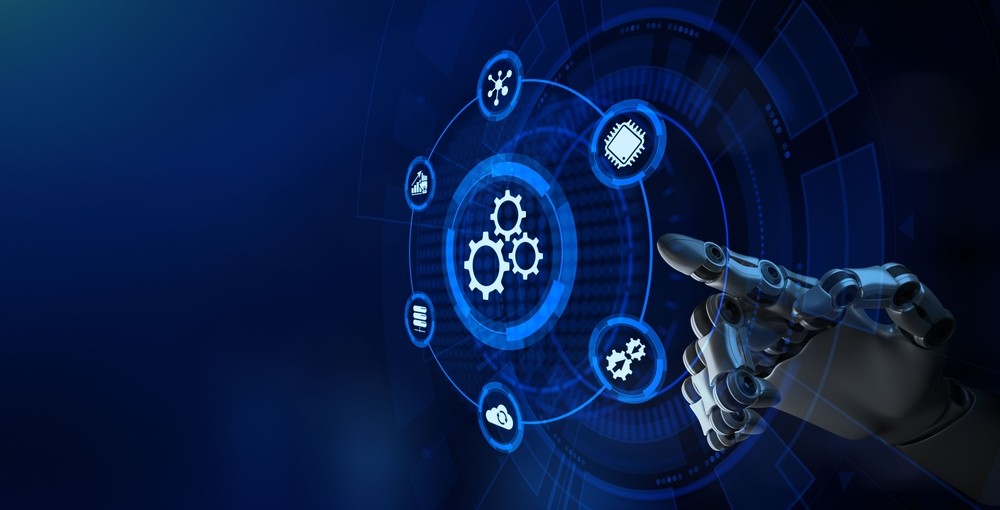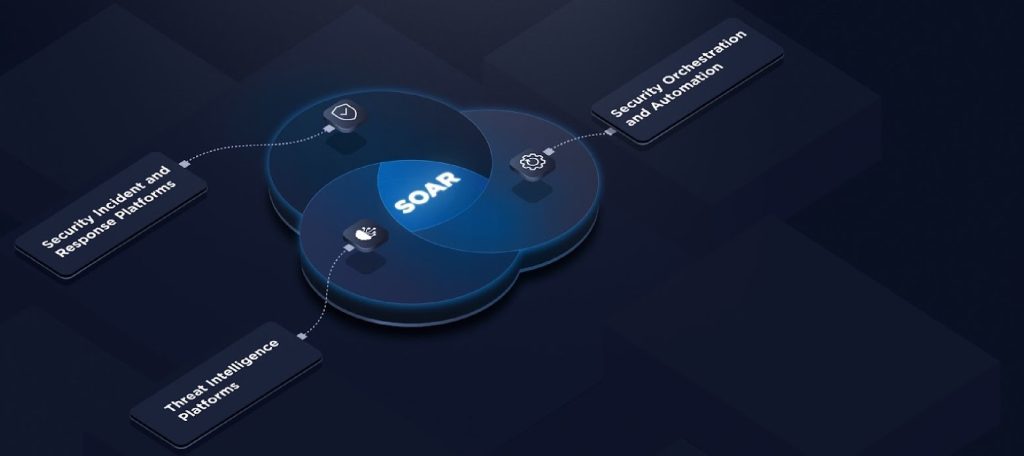November 21, 2023
Empowering Cybersecurity: The Strategic Significance of SOAR with CyberFlow
Kylie Abel

The proliferation of cyber threats has become a critical concern for businesses worldwide. The increasing number and sophistication of these threats are pushing organisations to fortify their defences. Traditional reactive approaches to cybersecurity are proving inadequate in the face of an expanding threat landscape. In response to this challenge, Security Orchestration, Automation, and Response (SOAR) has emerged as a pivotal solution, offering a comprehensive approach to threat management. This blog post aims to explore the profound significance of SOAR in fortifying cybersecurity defences and shed light on the strategic role played by industry leaders such as CyberFlow.
Understanding the Cybersecurity Landscape
To comprehend the importance of SOAR, it is essential to grasp the current state of cybersecurity threats. The expansion of digital technologies and the increasing interconnectedness of systems have left businesses more vulnerable than ever to a diverse array of cyber-attacks. Threats range from traditional malware and phishing attacks to more sophisticated and persistent threats like ransomware and advanced persistent threats (APTs). This heightened threat landscape demands a shift from reactive to proactive cybersecurity measures.
The Role of SOAR in Cybersecurity
SOAR represents a significant shift in cybersecurity strategy, providing an integrated solution that encompasses Security Information and Event Management (SIEM), threat intelligence, incident response, and automation. A closer examination of SOAR’s key components provides insights into its contributions to a comprehensive threat management approach.
Security Orchestration: Coordinating Defence Mechanisms
At the forefront of SOAR’s capabilities is security orchestration, a process that involves integrating and coordinating various security tools and processes. This facilitates a unified response to security incidents by ensuring seamless communication and collaboration among disparate tools. CyberFlow, a cybersecurity leader, strategically leverages SOAR to orchestrate its defence mechanisms, enhancing the synergy among its security tools for a more robust incident response workflow.
Automation: Speeding Up Response Time
A standout feature of SOAR is its automation capabilities, enabling swift responses to security incidents. Tasks such as data collection, analysis, and incident response can be automated, enhancing efficiency and minimising the risk of human error. CyberFlow optimises response times through SOAR’s automation capabilities, reinforcing its ability to stay ahead of evolving threats.
Incident Response: Timely and Coordinated Action
SOAR provides a structured framework for incident response, ensuring a coordinated and systematic approach. CyberFlow utilises SOAR to facilitate timely and coordinated actions, ranging from alert triage and investigation to containment, eradication, and recovery. This orchestrated response minimises the impact of security incidents.
Threat Intelligence Integration: Informed Decision-Making
SOAR’s integration of threat intelligence feeds is a crucial aspect that empowers organisations to make informed decisions based on real-time information about the latest cyber threats. CyberFlow, through SOAR, stays ahead of emerging threats, allowing for proactive adjustments to its security posture.

Why Businesses Need SOAR
Now, let’s delve into compelling reasons why businesses should adopt SOAR, with a specific focus on how CyberFlow strategically utilises this advanced framework.
Rapid Response to Evolving Threats
In the landscape of cyber threats, speed is paramount. SOAR’s automation capabilities enable businesses to respond rapidly to emerging threats, minimising the potential impact of security incidents.
Efficiency and Resource Optimisation
Traditional cybersecurity approaches often demand significant time and resources. CyberFlow strategically deploys SOAR to streamline processes through automation, allowing its security teams to focus on more complex tasks that require human expertise. This optimised resource utilisation enhances the overall effectiveness of cybersecurity efforts.
Unified Security Strategy
SOAR provides a unified platform for managing security incidents, ensuring consistency in response across different types of threats. By eliminating silos and integrating various security tools and processes, CyberFlow reinforces a cohesive and unified security strategy.
Scalability for Growing Threat Landscapes
As businesses expand, so does their attack surface. SOAR is designed to adapt to the evolving needs of an organisation. Whether dealing with a small-scale incident or a large-scale cyber-attack, CyberFlow leverages SOAR’s scalability for effective threat management.
Enhanced Visibility and Reporting
SOAR offers enhanced visibility into security incidents, a capability maximised by CyberFlow through centralised dashboards and reporting tools. This visibility not only aids in the detection of ongoing threats but also facilitates post-incident analysis for continuous improvement.
Empowering Businesses with SOAR and CyberFlow
In conclusion, the adoption of SOAR is not merely a response to current cybersecurity challenges; it is a strategic imperative for businesses aiming to safeguard their digital assets. When coupled with the expertise of industry leaders like CyberFlow, SOAR becomes a powerful tool for orchestrating security measures, automating routine tasks, and facilitating a coordinated response. As businesses continue to digitise and embrace technology, the need for robust cybersecurity measures, such as SOAR, will only intensify. Embrace the future of cybersecurity—embrace SOAR, with CyberFlow leading the way.
The Evolving Role of SOAR in Future Cybersecurity Strategies
Looking ahead, the role of SOAR in cybersecurity strategies is set to evolve further. With the ever-expanding attack surface and the continuous evolution of cyber threats, the need for adaptive and scalable solutions becomes paramount. SOAR, with its inherent flexibility, is positioned to play a central role in shaping the future of cybersecurity.
Adaptive Security Posture: SOAR’s ability to adapt to the evolving threat landscape positions it as a cornerstone for building an adaptive security posture. The dynamic nature of cyber threats requires a proactive and adaptive approach, and SOAR provides the necessary framework to orchestrate responses based on real-time threat intelligence.
Integration with Emerging Technologies: As emerging technologies such as artificial intelligence, machine learning, and the Internet of Things (IoT) become more prevalent, the integration of these technologies with SOAR will be crucial. This integration will enhance the capabilities of SOAR in detecting and responding to sophisticated and diverse cyber threats.
Global Collaboration and Threat Intelligence Sharing: The future of cybersecurity will likely involve increased collaboration and threat intelligence sharing on a global scale. SOAR platforms will play a pivotal role in facilitating this collaboration by providing a unified platform for sharing threat intelligence and coordinating responses to cyber threats.
Enhanced Automation and Orchestration: The automation and orchestration capabilities of SOAR will continue to evolve, enabling security teams to automate more complex tasks and orchestrate responses across a broader range of security tools. This enhanced automation will be essential in coping with the scale and speed of modern cyber threats.
Regulatory Compliance and Reporting: As regulatory requirements around cybersecurity become more stringent, SOAR platforms will need to evolve to provide robust capabilities for regulatory compliance and reporting. This includes features for documenting and demonstrating compliance with data protection regulations and industry-specific cybersecurity standards.
User Education and Training: While technology is a critical component of cybersecurity, the human factor remains a significant vulnerability. Future SOAR implementations may include features for user education and training, helping organisations build a human firewall against social engineering and phishing attacks.
Conclusion
The strategic adoption and utilisation of SOAR in cybersecurity strategies are pivotal for businesses seeking to navigate the complex and ever-evolving threat landscape. CyberFlow’s leadership in harnessing the power of SOAR exemplifies the proactive approach needed to stay ahead of cyber adversaries. As businesses continue to digitise and integrate advanced technologies, the role of SOAR will only become more integral in building resilient cybersecurity postures.
The evolution of cybersecurity strategies will demand continuous innovation, collaboration, and a proactive stance in the face of emerging threats. SOAR, with its ability to integrate, automate, and orchestrate, stands as a beacon of cybersecurity resilience, providing a robust framework for businesses to defend against existing threats and adapt to the challenges of tomorrow. Embracing the future of cybersecurity means embracing the transformative potential of SOAR, with visionary leaders like CyberFlow paving the way for a secure digital landscape.
About Us
If you are interested on apply more security to your business contact us
